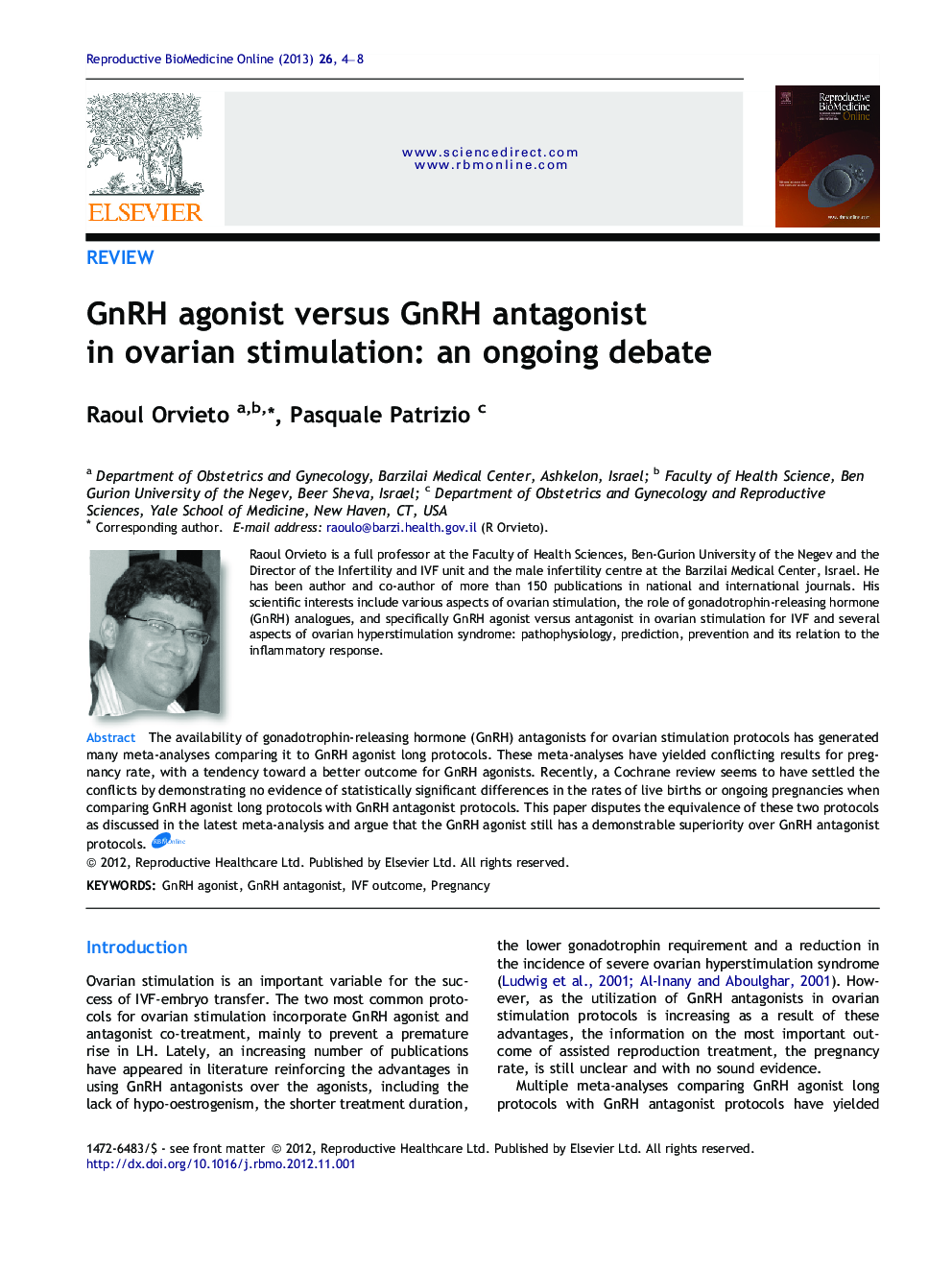| Article ID | Journal | Published Year | Pages | File Type |
|---|---|---|---|---|
| 3970598 | Reproductive BioMedicine Online | 2013 | 5 Pages |
The availability of gonadotrophin-releasing hormone (GnRH) antagonists for ovarian stimulation protocols has generated many meta-analyses comparing it to GnRH agonist long protocols. These meta-analyses have yielded conflicting results for pregnancy rate, with a tendency toward a better outcome for GnRH agonists. Recently, a Cochrane review seems to have settled the conflicts by demonstrating no evidence of statistically significant differences in the rates of live births or ongoing pregnancies when comparing GnRH agonist long protocols with GnRH antagonist protocols. This paper disputes the equivalence of these two protocols as discussed in the latest meta-analysis and argue that the GnRH agonist still has a demonstrable superiority over GnRH antagonist protocols.The availability of gonadotrophin-releasing hormone (GnRH) antagonist for ovarian stimulation protocols has generated many meta-analyses comparing it to GnRH agonist long protocols. These meta-analyses have yielded conflicting results for pregnancy rate, with a tendency towards a better outcome for GnRH agonists. Recently, a Cochrane review seems to have settled the conflicts by demonstrating no evidence of statistically significant differences in the rates of live births or ongoing pregnancies when comparing GnRH agonist long protocols with GnRH antagonist protocols. In this paper, we dispute the equivalence of these two protocols as discussed in the latest meta-analysis and argue that the GnRH agonist still has a demonstrable superiority over GnRH antagonist protocols.
